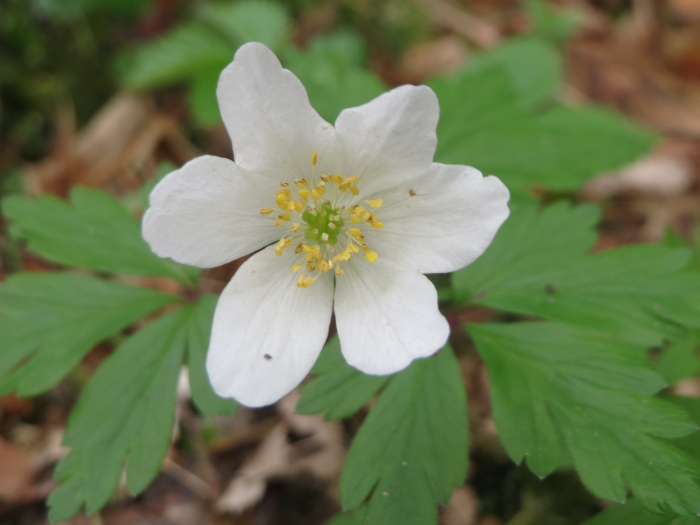Wood Anemone
(Anemone nemorosa)
Wood Anemone (Anemone nemorosa)
/
/

Andreas Rockstein
CC BY-SA 4.0
Image By:
Andreas Rockstein
Recorded By:
Copyright:
CC BY-SA 4.0
Copyright Notice:
Photo by: Andreas Rockstein | License Type: CC BY-SA 4.0 | License URL: http://creativecommons.org/licenses/by-sa/4.0/ | Rights Holder: Andreas Rockstein | Publisher: iNaturalist | Date Created: 2017-04-02T14:21:53-07:00 |

























Estimated Native Range
Summary
Anemone nemorosa, commonly known as Wood Anemone, is a perennial herb native to deciduous woodlands and forest clearings across Europe. It thrives under the canopy of trees, often carpeting the forest floor. This species prefers cool, moist conditions and is typically found in areas with rich, well-drained soil. The Wood Anemone reaches a modest height of 2-6 inches (5-15 cm) and is characterized by its rhizomatous growth habit, which allows it to form extensive colonies over time. Its palmate leaves are deeply lobed and emerge in early spring, followed by the appearance of delicate, star-shaped white flowers with six to ten petal-like segments, each up to 1 inch (2.5 cm) across. The flowers bloom from March to May and are highly valued for their early spring display and their role as indicators of ancient woodland ecosystems.
The Wood Anemone is appreciated for its understated beauty and its ability to naturalize in shady garden areas, making it a popular choice for woodland gardens, shaded borders, and underplanting beneath deciduous trees. It requires minimal maintenance once established and can be left undisturbed to spread. In cultivation, it prefers partial to full shade and consistently moist, humus-rich soil. While it is not drought-tolerant, it does go dormant in the summer after flowering, reducing its water needs during this period. Garden cultivars, including those with double flowers or pink tints, have been developed, and some have received the Royal Horticultural Society’s Award of Garden Merit for their garden performance.CC BY-SA 4.0
The Wood Anemone is appreciated for its understated beauty and its ability to naturalize in shady garden areas, making it a popular choice for woodland gardens, shaded borders, and underplanting beneath deciduous trees. It requires minimal maintenance once established and can be left undisturbed to spread. In cultivation, it prefers partial to full shade and consistently moist, humus-rich soil. While it is not drought-tolerant, it does go dormant in the summer after flowering, reducing its water needs during this period. Garden cultivars, including those with double flowers or pink tints, have been developed, and some have received the Royal Horticultural Society’s Award of Garden Merit for their garden performance.CC BY-SA 4.0
Plant Description
- Plant Type: Herb
- Height: 0.3-0.6 feet
- Width: 0.6-2 feet
- Growth Rate: Slow
- Flower Color: White
- Flowering Season: Spring
- Leaf Retention: Deciduous
Growth Requirements
- Sun: Full Shade
- Water: Medium
- Drainage: Fast, Medium
Common Uses
Bee Garden, Border Plant, Butterfly Garden, Groundcover, Low Maintenance, Rock Garden
Natural Habitat
native to deciduous woodlands and forest clearings across Europe
Other Names
Common Names: Wood Anemone, Thimbleweed, European Wood Anemone, Windflower
Scientific Names: , Anemone nemorosa, Anemanthus nemorosus, Anemonanthea nemorosa, Anemone alba, Anemone intermedia, Anemone intermedia, Anemone nemorosa f. abnormis, Anemone nemorosa f. bicaulis, Anemone nemorosa f. bracteata
GBIF Accepted Name: